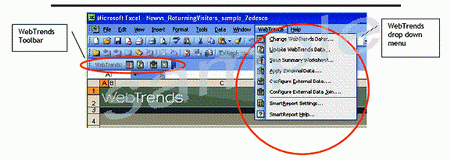Common menu bar links
Breadcrumb Trail
ARCHIVED - Using External Service Delivery Key Performance Indicators
 This page has been archived.
This page has been archived.
Archived Content
Information identified as archived on the Web is for reference, research or recordkeeping purposes. It has not been altered or updated after the date of archiving. Web pages that are archived on the Web are not subject to the Government of Canada Web Standards. As per the Communications Policy of the Government of Canada, you can request alternate formats on the "Contact Us" page.
MAF Category: Citizen-Focussed Service
Theme: Client Satisfaction
The working group recommended use of CMT (http://www.iccs-isac.org/eng/cmt-about.htm) as the primary tool for collecting Client Satisfaction ratings for the Internet Channel. While the primary delivery mechanism of this instrument is through live or phone-based interviews, Canada Post has noted that they get good results from an automated survey within their site. This survey is programmed quarterly to invite a random sample of site visitors to participate in a short quality survey.
As with other service channels, a second measure, Service Complaints,has been identified by the working group. It is somewhat easier to collect within the Internet Channel but has not been systematically analyzed by departments and agencies at this time. Preparation of an effective contact‑us feature is a prerequisite. If GoC Common Look and Feel standards are followed, the contact‑us button on the top bar will direct site visitors to a feedback or inquiry page. This page can be structured to allow site visitors to categorize their feedback or complaint. Several members of the working group believe that the primary channel for Internet service feedback will be e-mail or the contact‑us message form.
No vendor-specific implementation guidelines are required for either measure.
MAF Category: Stewardship
Theme: Agent (Resource) Utilization
GoC executive management places high value on the comparability of cost per interaction across channels. While the various measures of Agent Utilization have less overall impact in the Internet Channel, the overall cost per visit remains an important but challenging measure to calculate.
When Internet Channel service is supported by dedicated agents, the normal call centre KPIs for Agent Utilization apply.[2] In these "agent-assisted" environments, the ACD or an integrated telephone/IP contact centre management tool typically manages Agent Utilization statistics. In either case, the specific guidelines listed in Section 4 provide value to the service manager.
This section reviews the definitions, implementation characteristics, and vendor specifics related to Resource Utilization measures.
Cost per VisitTotal operational cost of the Web site(s), divided by the number of visits within the reporting interval |
The Cost per Visit for the reporting interval provides strong trend information on overall Internet Channel efficiency. The working group has noted that there is inconsistency in how total operational cost is calculated. A standard definition for Internet operational cost will be developed in the future.
Web-monitoring tools provide export capability to load traffic data into popular tools such as Excel or Crystal reports. As a guideline, managers should export visit and visitor data and then apply itemized costs to determine a cost per visit. WebTrends provides specific features to support the integration of its monitoring data with external report writers.
Figure 5-7: SmartReports Integration (WebTrends)

Other Agent Utilization measures can be tracked for agent-assisted calls concerning the Internet Channel and for all messages and e-mails submitted through the Web site. The following are recommended as operational measures. Specific implementation details are discussed in Section 4.
Agent AdherencePercentage of a day that we can reasonably expect an agent to be logged onto the ACD
Total Time Logged onto ACD (Talk, Wait, and Wrap-up) X 100 =
% Adherence |
Agent OccupancyPercentage of time agents are logged onto the ACD system and are either speaking with a client or completing paperwork related to that specific call % of Talk Time + % of Wrap-up Time |
